Subscribe now and get the latest podcast releases delivered straight to your inbox.
How to write a case study
- Pick your subject, which should be a completed project with measurable results and a client who agrees with your assessment of success.
- Gather the information you require to write your case study, including background information, first-person analysis and accounts from your client/buyer, and any testimonials you have.
- Write your case study. Minimize editorializing, use active language and lean on power verbs to make your case study extra persuasive.
- Design your case study document or web page with modern readability and web design best practices in mind.
- Film a customer journey video to include with your case study, since video is proven to build trust faster than text.
Research shows that brand trust is the second most important purchasing factor for brands across most geographies, age groups, gender and income levels, trailing only price.
This is especially true in the digital sales and marketing world, where trust is the currency that underpins all business. Your ideal buyers will ask:
- “Can you prove you have the abilities and experience you say you have?”
- “Can you demonstrate that you’ve helped someone like me (or in my industry) in the past and gotten great results?”
- “Can we trust that you’re going to deliver on your promises?”
If you’re in a services-related industry or sell specific kinds of products, you’re often going to answer those questions with one of the most powerful pieces of assignment-selling content on the planet: a case study.
(If you're ready to get going, you can access our free case study template so you can follow along with the process below with ease.)
Why you need to produce case studies
Before we dive into the nuts and bolts of pulling together your case study, let's have a quick refresher on why a case study actually is so important.
I know, I know. You’ve seen a hundred of these, but before you set out to write a great case study, you need to understand the purpose, as it will inform every decision you’ll make as you go through this process.
If you're looking to nurture a prospect, case studies are a powerful way to nurture them through the buyer’s journey. This is particularly true since potential customers can be up to 70% of the way through the buyer's journey before they reach out to someone in sales – and by that point, they’re still going to consume a bunch more content before they make their final purchasing decision.
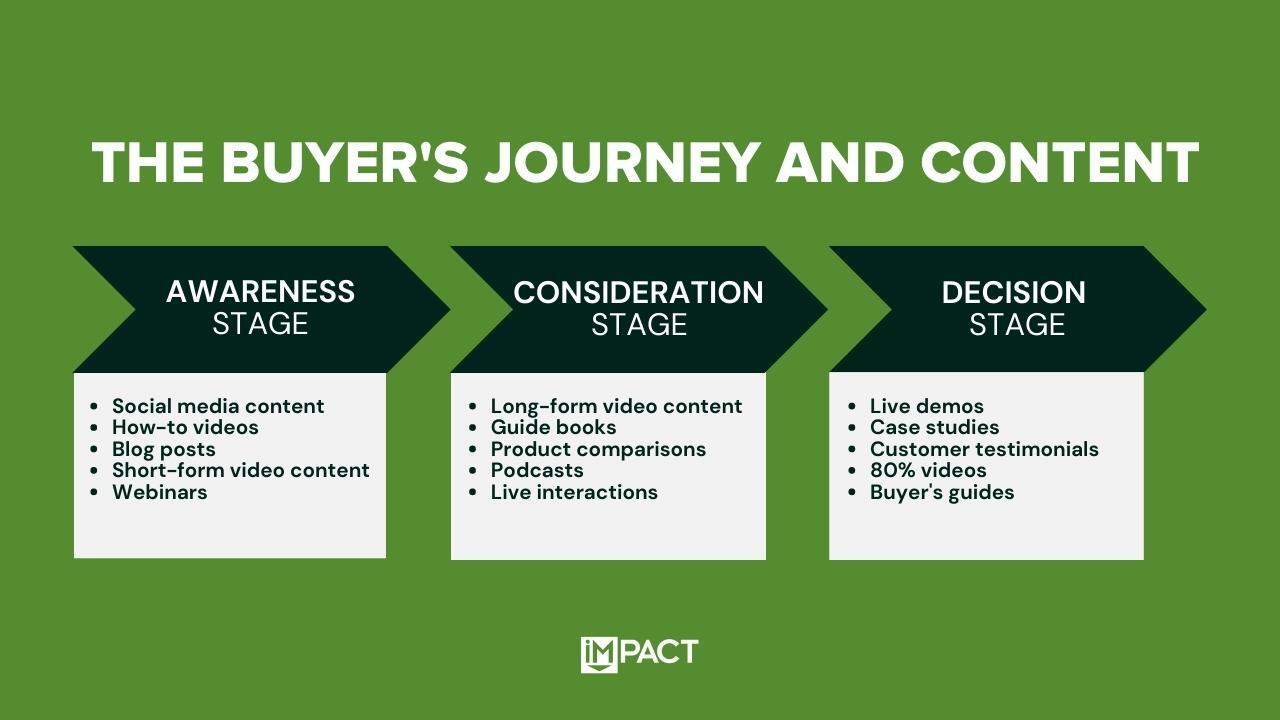
That’s why your content strategy needs to cover more than just blogs, social media posts, and podcasts targeting the awareness and consideration stages.
When done well, case studies can be invaluable inbound marketing tools during that critical decision stage when prospects are evaluating who is going to help solve their problem – and you want them to choose you.
Case studies are also indispensable content pieces to be used during the sales process to help get the customer over the line.
So, how do you actually write a case study? Follow these five steps
Step 1. Pick your case study subject
If a client case study fails to deliver, it's often because you picked the wrong client to highlight.
That’s why you need to evaluate the subject of your case study before you begin work. But don't get caught up on the size of the story you're telling, simply thinking that the bigger the client, the longer the engagement, the better the story.
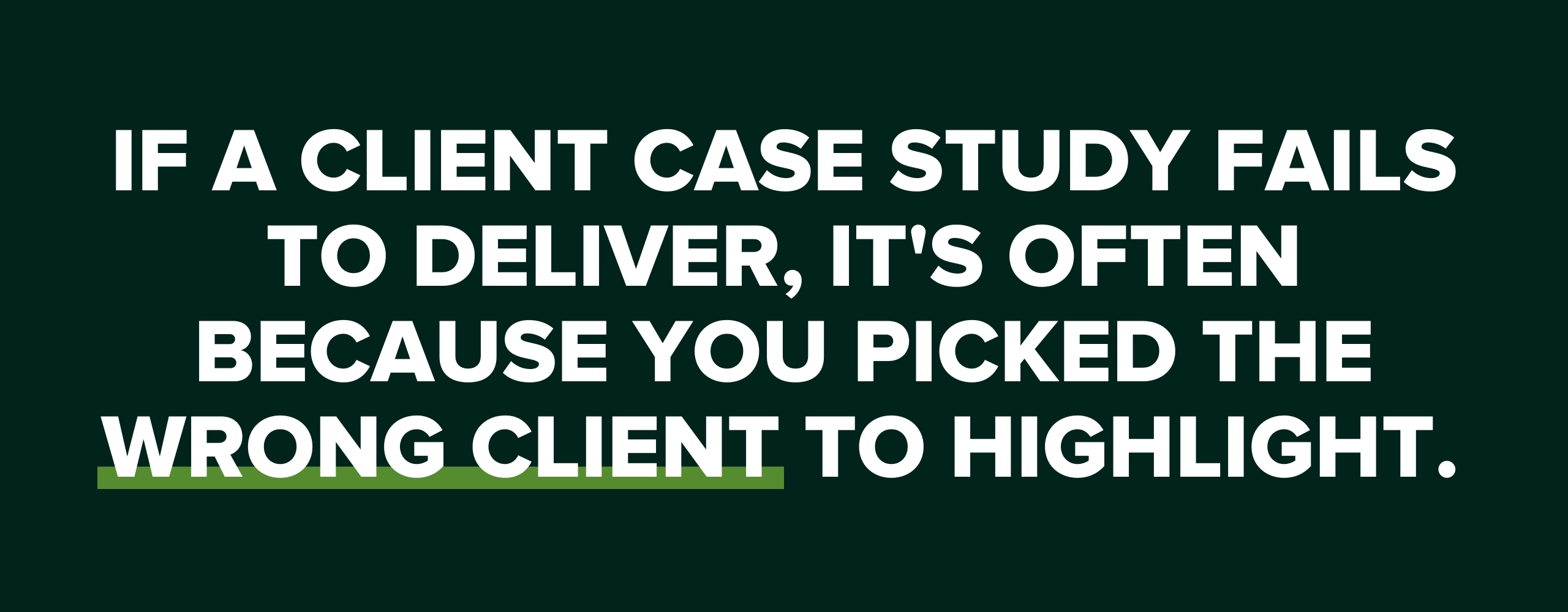
That's not always the case.
One-off projects, a short engagement, or a long-term, strategic endeavor that took months to complete — they’re all viable candidates for your next case study.
But what do the most successful case study subjects have in common?
Well, the easiest way to answer that is by telling you what you should avoid:
- If a project is still in progress, it's not case study material. You can’t write aspirational case studies, where there is “hope” or “intent” to bring about certain results. Wait for the story to be complete before you start telling it.
- If your client is not happy with the work you produced, they're not case study material. This should be obvious, but I’m going to throw in this reminder anyway. When it comes to your case study, you should not be the only one satisfied with what you delivered.
- If you don’t have results to share, you don't have case study material. It’s that simple. So make sure you have the data to back up any story you're telling.
Keep this in mind for any case study project you're considering. Set it aside if it doesn't meet these criteria. Chances are, it could develop into something down the road.
The best case studies highlight completed work supported by measurable results that show how you solved a problem for a now-happy client. Most of all, both you and your client need to be on the same page in considering the products, work, or services you provided were successful.
Step 2. Gather your information
Once you’ve identified your case study subject, it’s time to roll up your sleeves and go on a fact-finding mission. There are a lot of questions you’ll need to answer before you start working on a draft, and you’ll probably need to talk to a number of different people in order to get them.
For example:
- Which of your ideal buyers will this case study target?
- What problem did your client need to be solved?
- Why were you chosen to help them solve it?
- How did you approach the challenge?
- What was the ultimate solution, how did you arrive at it and how long did it take to implement?
- What benefits or results did your client see as a result of your work immediately?
- What benefits or results did your client see as a result of your work over time?
- Are there any anticipated outcomes they expect to see in the long run?
- Do we have a client testimonial?
The goal is to gather as much information as possible across the entire story:
First: Who is your client, and what was their problem or goal?
Next: What was the process of uncovering the solution and how was it implemented?
Finally: How have the end results impacted the client's current state?
Much of this information can come from people on your team, but I can't overstress the importance of talking directly to the clients themselves.
At IMPACT, when I'm writing a case study:
- I start by collecting information from colleagues via a Google Form.
- Next, I set an internal meeting to hear from the IMPACT team that worked with the client. I want to get background information and start to find the narrative.
- Then, I meet with key stakeholders from the client to interview them about their experience and ask them for any data they're able to share.
We also offer this free case study template that contains a list of questions you should ask when gathering information for your case study.
Step 3. Write your case study
Your case study will live and die by your ability to craft a narrative that is memorable.
You accomplish this in two ways: tone down the fluff and be persuasive.
A) Minimize your editorializing
Whenever I’m working on a project I’m particularly proud of, I have a tendency to provide too many superfluous details.
In the context of a case study, this kind of over-editorializing can make it look like you’re trying to fluff or pad your case study because your results are flimsy.
Instead, streamline your narrative and your language.
Every detail you include should serve one purpose: to support the thesis of your case study. If it doesn’t, cut it out.
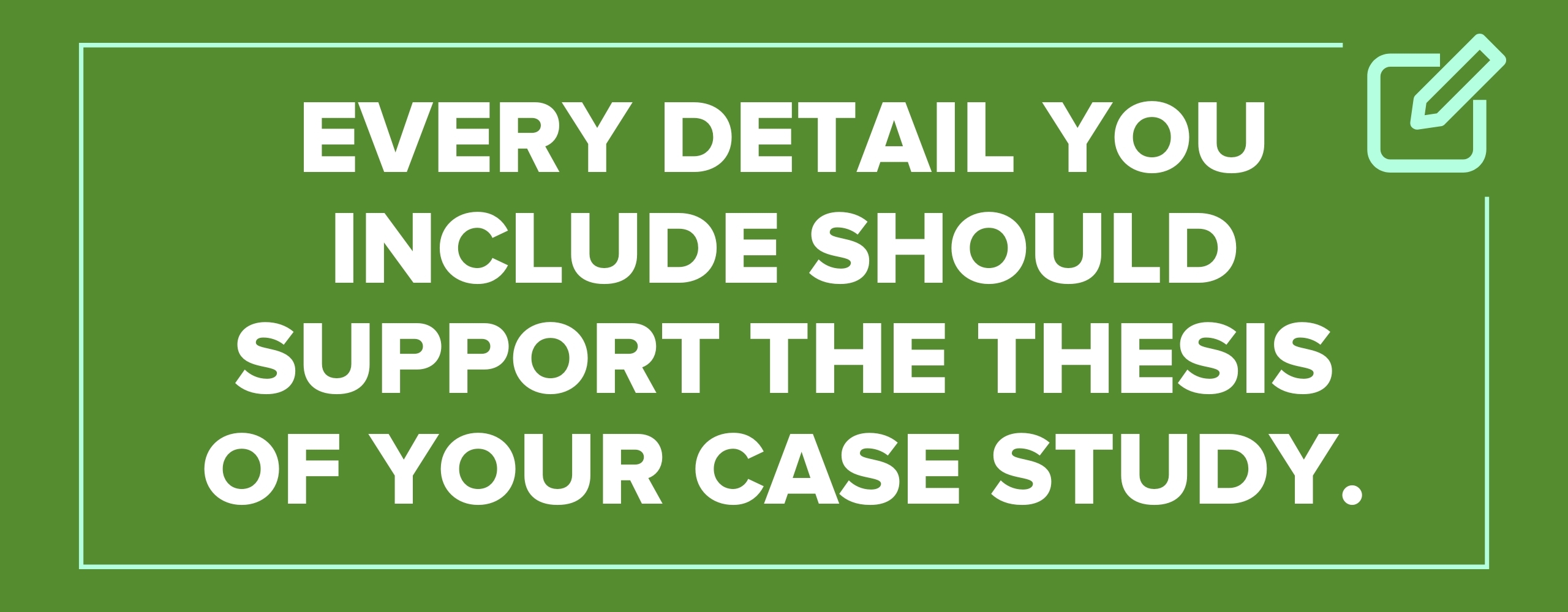
Also, avoid words or phrases that attempt to influence an opinion, such as unnecessary adverbs or adjectives.
For example, if you’re showcasing a branding project, don’t say the final logo was “beautifully designed.” That kind of statement should only be shared if it’s a testimonial from a client — the client's opinion of your work is the one that matters, not yours.
B) Put your persuasive writing skills to work
All that said, your case study should inspire people to take action. They should want to immediately pick up the phone and call you because they feel compelled to work with you, right?
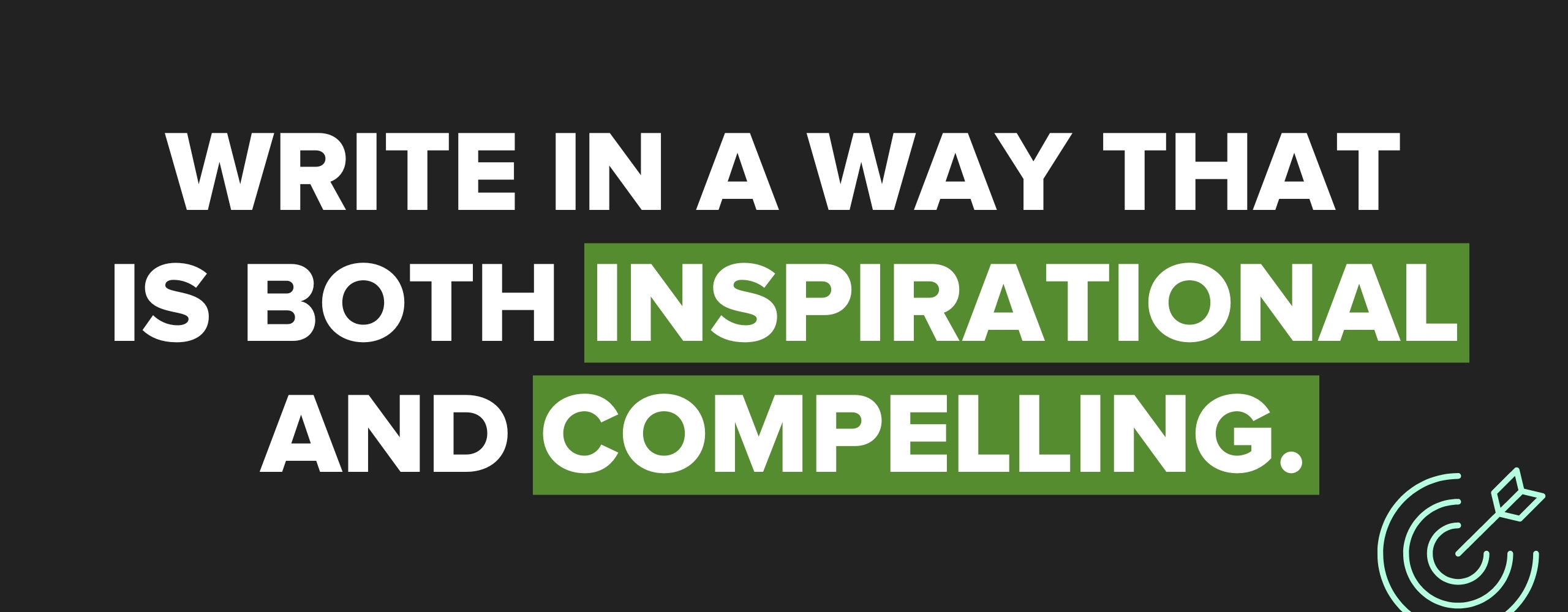
That only works if you write in a way that is both inspirational and compelling.
Persuasive copy is powerful. Here’s how you do it:
- Even though you’re telling a story about a specific client, include qualifiers about them (industry, size) – or their situation (pain point, objective) – that allow a reader to feel like you’re speaking directly to them and the problem they’re trying to solve. They should be able to easily step into their shoes and say, "Hey, that sounds like me."
- Comparisons, such as metaphors and analogies, can be your best friend in a case study, as they can help a reader accept a certain scenario as being true if it’s related to something they already understand. However, there is one caveat: Don’t use clichés.
- Use power verbs. In fact, here are 185 of them, waiting for you to choose them. Power verbs have momentum and imply results. Power verbs aren’t wimpy.
- Spotlight data, client quotes and testimonials to demonstrate the effectiveness of your work.
Finally, don’t forget to proofread!
4. Design your case study
When you have your case study draft in hand, filled with persuasive phrasing and glowing client testimonials, it is time to design. The first question you need to ask yourself is about format. Is this a PDF to be shared with bottom-of-the-funnel buyers? Is it a webpage? Does it need to match other case studies your team (or your predecessor) has produced in the past?
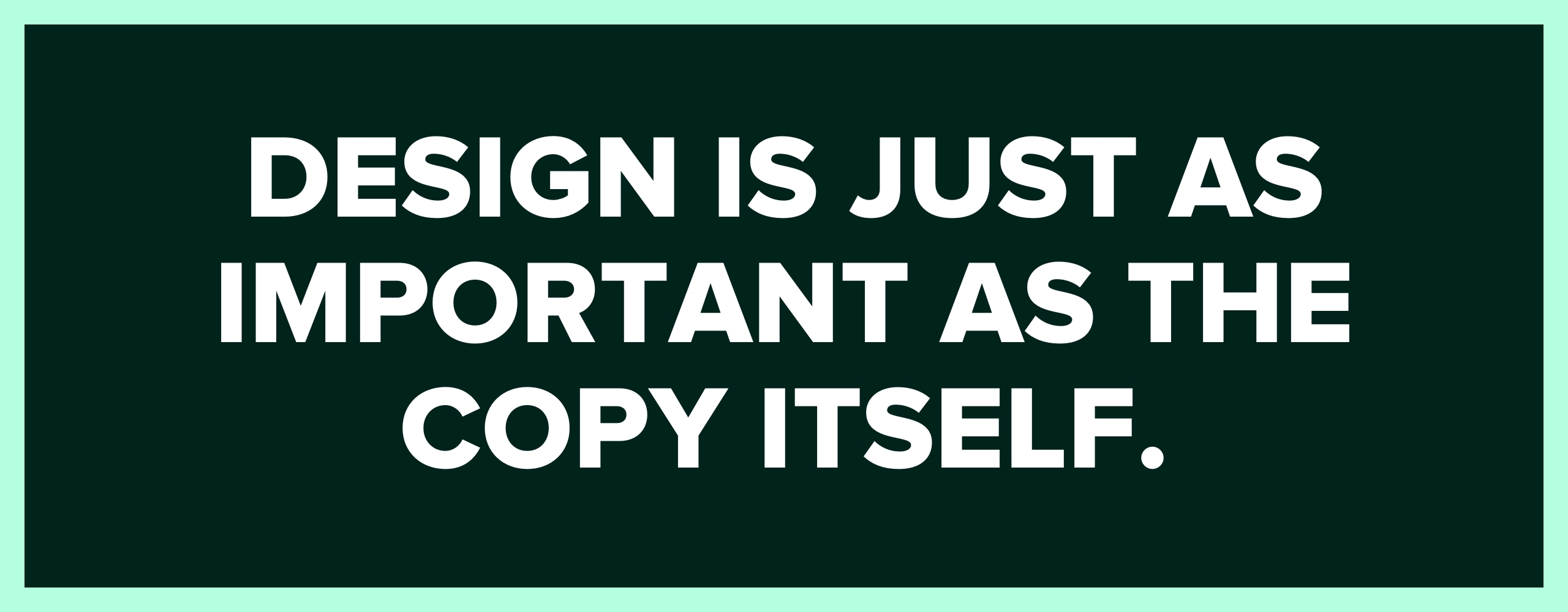
Of course, the end result at this step will probably depend a lot on your brand’s visual standards, but I still have a few tips for you.
If you’ve been blogging or creating content for any amount of time you — and your designers — probably already know the basics.
- Whitespace is your friend
- Visuals are essential
- Break up walls of text with headings, subheadings pull quotes, and bulleted lists
- Call out relevant data points and quotes you want readers to remember visually
- If you have a testimonial, include the person’s name, job title, and photo. It shows you solve problems for actual people.
When it comes to case studies, design is just as important as the copy itself.
A well-written case study will only be persuasive if you create something visually appealing enough that a prospect will actually read it. If they don’t read your case study because of an ugly, unfriendly design, all of your hard work will have been for nothing.
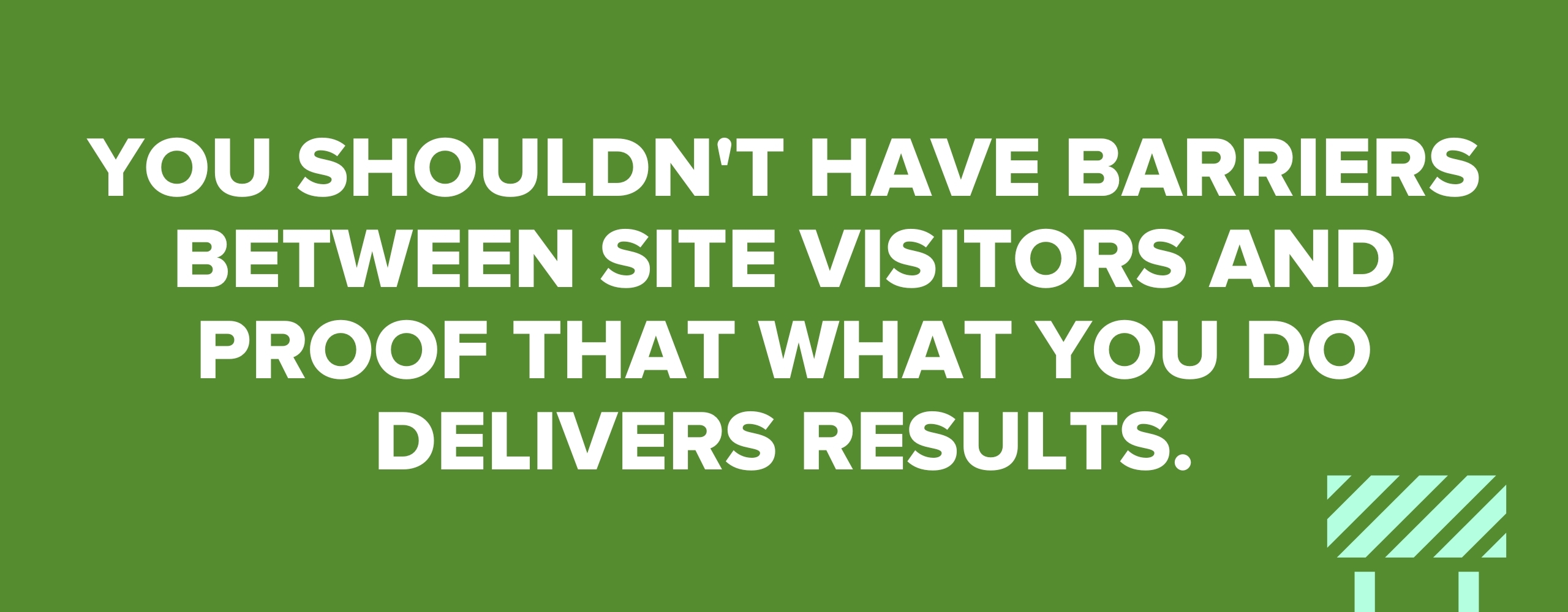
The format of how you present your case study is up to you, but keep in mind they should be easy to find and read. Our success stories are on our navigation and they're ungated. You shouldn't have barriers between site visitors and proof that what we do delivers results.
5. Create a customer journey video for your case study (bonus!)
Video is one of the most powerful ways to build trust and shorten your sales cycle. At IMPACT, we teach our clients that there are seven types of video for sales and marketing that are proven to drive traffic, leads, and sales — and one of them is the customer journey video.
Here's an example from one of our own case studies:
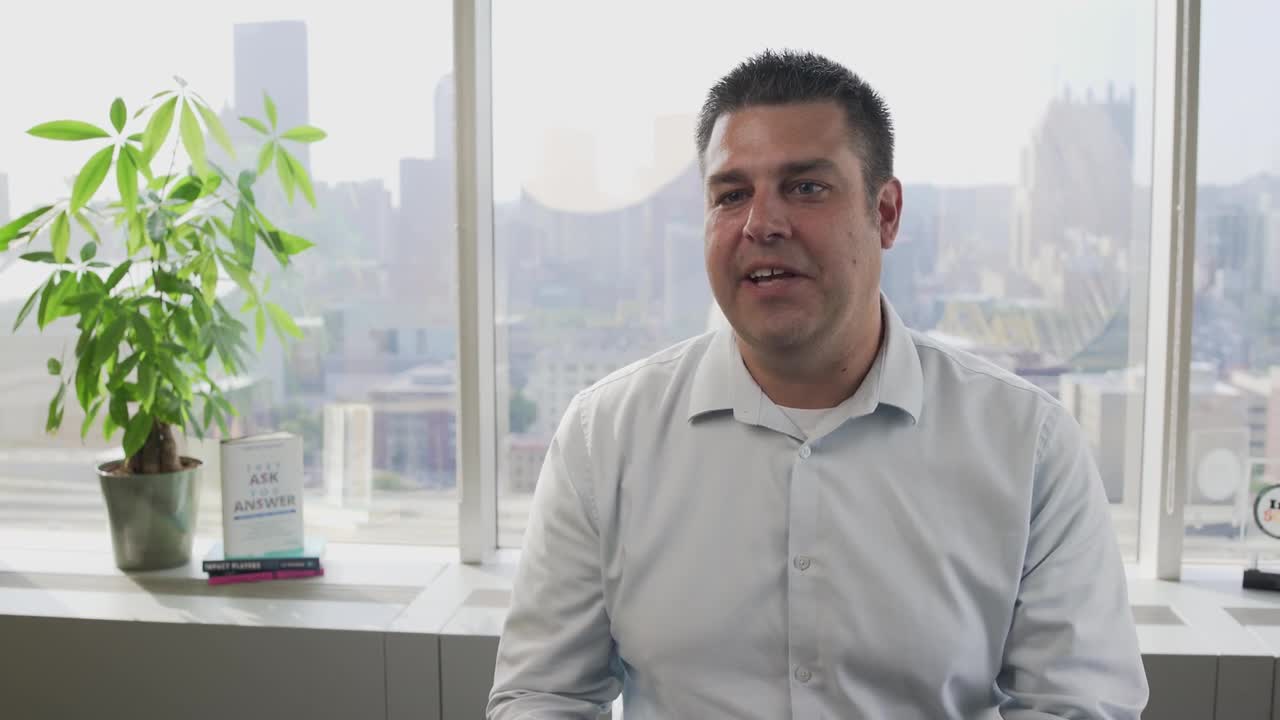
The key to a successful customer journey video is right in the title. It's about their journey. It's not simply a gushing video version of a testimonial – it tells a story, from beginning to end. It showcases where your client started, the problem when it finally reached its breaking point, how they finally overcame those obstacles and how things are now.

Most of all, this type of video makes your client the hero, not you. Which brings me to my final point.
If you remember nothing else, let it be this
Yes, a case study is meant to be the "proof of life" for your capabilities and what's possible should your ideal buyers choose you as their solutions provider or partner.
That being said, the best case studies make the clients the hero of their own success stories. They do not paint the solutions provider as the white knight who swoops in to save the day, with a client demonstrating no agency, ownership, or ability to overcome their obstacles.
If you want to convince an ideal buyer of your worth, your value, and what you can do for them, show them what's possible for themselves. Don't be the hero, be the guide that shows them the pathway to success.


Order Your Copy of Marcus Sheridan's New Book — Endless Customers!

